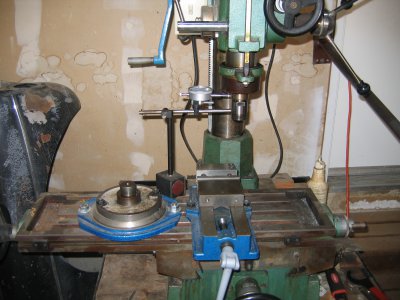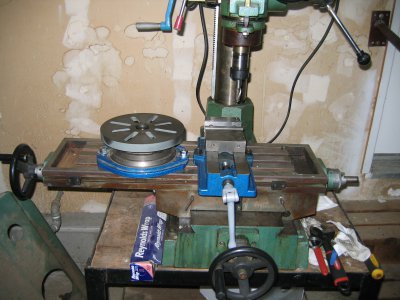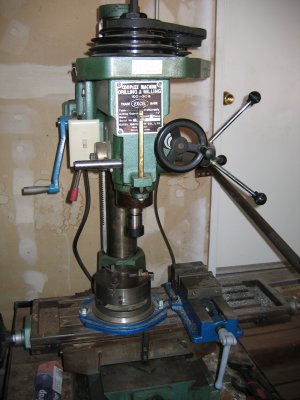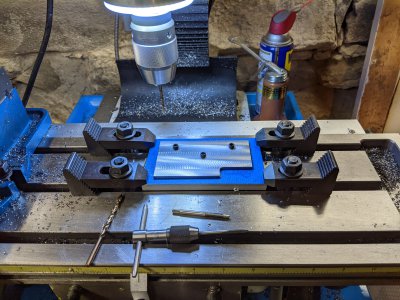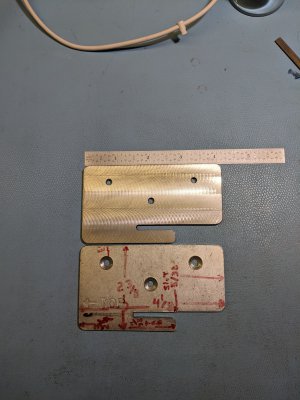- Joined
- Dec 18, 2019
- Messages
- 7,428
Although the wood would be easy to sink a few screws into, it's not a decent hard wood. So I am redoing this with the aluminum plate I posted. I found some shorter studs that could work. They will work because the clamp height is now 3/8 rather than 0.80. The head and collet now don't interfere with the studs.
So for anyone following along, the steel workpiece and the aluminum sacrificial plate (ASP) were cleaned with acetone. (I basically followed the method given in a NYCNC video.) Then both surfaces were taped with 2" wide painters tape. Used a round rod to press the tape down for better adhesion. Wiped the tape with 70% isopropyl to get any errant fingerprints off. Super glue was put on the ASP tape. Then the workpiece was laid onto the ASP trying to align it all. You don't have any time for alignment, it has to be pretty close the first time. This time I didn't glue my fingertips! Finally some weight in the form of some aluminum chunks was placed on top to act as a clamp. In an hour it should be cured enough.
After tramming, I'll get the holes located and drilled. Then I can drill partially into the ASP and tap it. Finally I'll screw in some SHCS. They won't be in the way of what I want to machine. Then finally I can mill the slot in the workpiece. Assuming I don't fluff the whole thing, pictures to follow.
So for anyone following along, the steel workpiece and the aluminum sacrificial plate (ASP) were cleaned with acetone. (I basically followed the method given in a NYCNC video.) Then both surfaces were taped with 2" wide painters tape. Used a round rod to press the tape down for better adhesion. Wiped the tape with 70% isopropyl to get any errant fingerprints off. Super glue was put on the ASP tape. Then the workpiece was laid onto the ASP trying to align it all. You don't have any time for alignment, it has to be pretty close the first time. This time I didn't glue my fingertips! Finally some weight in the form of some aluminum chunks was placed on top to act as a clamp. In an hour it should be cured enough.
After tramming, I'll get the holes located and drilled. Then I can drill partially into the ASP and tap it. Finally I'll screw in some SHCS. They won't be in the way of what I want to machine. Then finally I can mill the slot in the workpiece. Assuming I don't fluff the whole thing, pictures to follow.

